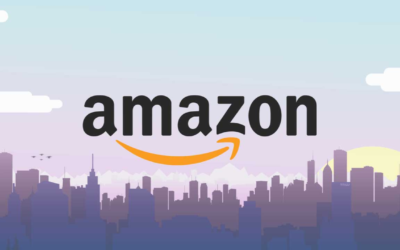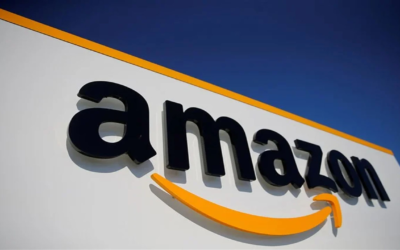Dropshipping has become a popular method of selling products online due to its ease of use and low startup costs. However, one of the biggest challenges for dropshippers is fulfilling orders and handling inventory. That’s where Amazon FBA (Fulfillment by Amazon) comes in, allowing dropshippers to outsource their fulfillment and focus on growing their business. In this guide, we’ll dive into how to use Amazon FBA for dropshipping and the benefits it offers.
What is Amazon FBA?
Amazon FBA is a service provided by Amazon that allows sellers to store their products in Amazon’s fulfillment centers. Amazon takes care of picking, packing, and shipping the products to customers on behalf of the seller. Additionally, Amazon provides customer service, handles returns, and manages inventory.
How does Amazon FBA work for dropshipping?
To use Amazon FBA for dropshipping, a seller would first need to create an Amazon seller account and sign up for Amazon FBA. They would then source products from suppliers and have them shipped directly to Amazon’s fulfillment center. The seller would then create a product listing on Amazon and set the price. When a customer places an order, Amazon handles the rest, including picking, packing, and shipping the product to the customer.
Benefits of using Amazon FBA for dropshipping
1. Faster Shipping Times
One of the biggest advantages of using Amazon FBA for dropshipping is faster shipping times. Since Amazon has a vast network of fulfillment centers, they can get products to customers quickly, often in just a few days. This can result in higher customer satisfaction and more repeat business.
2. Lower Shipping Costs
Shipping costs can eat into a dropshipper’s profit margin. However, Amazon has negotiated lower shipping rates with carriers due to their volume of shipments. By using Amazon FBA, dropshippers can take advantage of these lower rates and pass the savings on to customers or increase their own profit margin.
3. Prime Eligibility
When using Amazon FBA, sellers’ products become eligible for Amazon Prime, which is a popular program that offers free two-day shipping to customers. Prime members also tend to spend more money on Amazon, so being Prime-eligible can increase a seller’s sales and visibility.
4. Scalability
Since Amazon handles the fulfillment process, dropshippers can focus on growing their business rather than worrying about fulfilling orders. This makes it easier to scale the business and handle higher order volumes.
5. Improved Customer Service
Amazon has a reputation for excellent customer service. By using Amazon FBA, dropshippers can take advantage of this and offer their customers the same level of customer service. Amazon handles customer inquiries and returns on behalf of the seller, making the process seamless for the customer.
Tips for using Amazon FBA for dropshipping
1. Choose the right products
When selecting products to sell using Amazon FBA, it’s important to choose products that are in demand and have high profit margins. Conduct market research and analyze competitors to find products that meet these criteria.
2. Optimize product listings
To increase sales and visibility, it’s important to optimize product listings. This includes using high-quality images, writing compelling product descriptions, and using relevant keywords.
3. Monitor inventory levels
Since Amazon handles inventory management, it’s important to monitor inventory levels to ensure products don’t go out of stock. This can result in lost sales and a decrease in customer trust.
4. Price competitively
When setting prices for products, it’s important to price competitively. This means analyzing competitors’ prices and adjusting prices accordingly to remain competitive.
5. Utilize Amazon advertising
Amazon offers various advertising options that can help increase product visibility and sales. This includes Sponsored Products, Sponsored Brands, and Sponsored Display ads. By utilizing these advertising options, dropshippers can increase their product visibility and drive more sales.
6. Maintain good communication with suppliers
Since dropshippers rely on suppliers to ship products to Amazon’s fulfillment centers, it’s important to maintain good communication with suppliers. This includes providing clear instructions and expectations, as well as regularly following up on orders.
7. Consider outsourcing product research and listing optimization
Product research and listing optimization can be time-consuming tasks. Consider outsourcing these tasks to a virtual assistant or agency to free up time to focus on other aspects of the business.
Conclusion
Amazon FBA offers dropshippers an efficient and effective way to fulfill orders and handle inventory. By outsourcing the fulfillment process to Amazon, dropshippers can focus on growing their business and increasing sales. When using Amazon FBA for dropshipping, it’s important to choose the right products, optimize product listings, monitor inventory levels, price competitively, utilize Amazon advertising, maintain good communication with suppliers, and consider outsourcing tasks. With these tips, dropshippers can take advantage of the benefits Amazon FBA offers and scale their business.
FAQs
- Do I need to have an Amazon seller account to use Amazon FBA for dropshipping? Yes, you would need to have an Amazon seller account to use Amazon FBA for dropshipping.
- How much does Amazon FBA cost? Amazon FBA fees vary depending on the size and weight of the product. Sellers would need to pay for storage, fulfillment, and other associated fees.
- Can I use Amazon FBA for international dropshipping? Yes, Amazon FBA is available in various countries, allowing for international dropshipping.
- Can I use Amazon FBA for all types of products? No, Amazon has restrictions on certain types of products, such as hazardous materials and perishable goods.
- What happens if a product is returned to Amazon’s fulfillment center? Amazon handles returns on behalf of the seller. The product would be inspected, and the seller would be refunded the product price minus any associated fees.





0 Comments